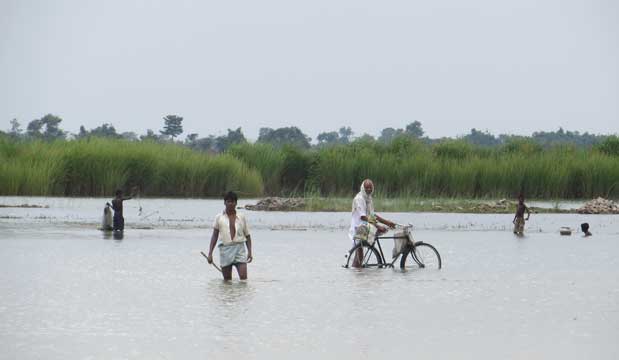Contact Person: Anjal Prakash
Type: Roundtable Discussion
Background
|
About 76% of the population of north Bihar live under the threat of recurring floods, which affect around 73% of Bihar’s area. Floods in Bihar destroy thousands of human lives, not to mention livestock, and assets worth millions of dollars, on an almost annual basis. The main cause of floods in Bihar is heavy monsoon rainfall, apart from a variety of issues related to flood management. Most of the rivers flowing through Bihar originate in Nepal and China. When there is heavy rainfall upstream, water flows into the major drainages of the Narayani, Bagmati, Gandaki, and Koshi rivers, eventually inundating the plains or lowlands of Bihar. |
 Download Event Flyer Download Event Flyer |
Roundtable
The roundtable, envisaged as a multistakeholder platform, will start with people from five different flood-affected regions of Bihar sharing their experiences of living with floods, the impact of floods on their lives and livelihoods, and possible flood risk mitigation and adaptation options. Their talks will help set the agenda of the roundtable discussions. At the plenary, various groups will present their views on the issues and concerns flagged by the floodaffected people, including from transboundary perspectives.
 People wading through an overflowing river in Bihar to reach their destinations.
People wading through an overflowing river in Bihar to reach their destinations.
Photo credit: Anjal Prakash / ICIMOD
Expected Outcome
The expected outcome is a shared understanding on the recurring floods in Bihar, including implications for poor and marginalized populations, and the development of a road map for continued dialogue and future research and action.
Participants
About 35 participants, including representatives from flood-affected communities, researchers, policy makers, NGO representatives, activists, and students are expected to attend.
Organisers
The Himalayan Adaptation, Water and Resilience (HI-AWARE) Research Initiative of the International Centre for Integrated Mountain Development (ICIMOD) in partnership with Megh Pyne Abhiyan and the Centre for Environmental Sciences of Central University of South Bihar.
